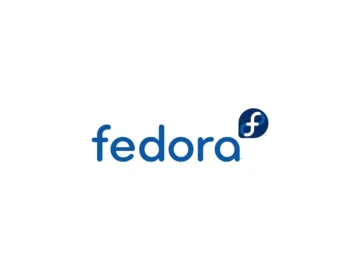Debian Linux: A Comprehensive History and Explanation
Introduction: The Purpose of Debian Linux
Debian Linux is one of the oldest and most respected Linux distributions, known for its stability, reliability, and extensive software repositories. Created with the goal of providing a free and open operating system, Debian has become a foundational project within the Linux ecosystem. Its purpose extends beyond merely being an operating system; Debian serves as a universal platform for developers, system administrators, and end-users alike. It is designed to be versatile, suitable for servers, desktops, and embedded systems, and is also the base for many other popular Linux distributions, including Ubuntu and Kali Linux.
Origins: The Beginning of the Debian Project
The Debian Project was founded by Ian Murdock in 1993. At the time, the Linux ecosystem was still in its infancy, with only a handful of distributions available, most notably Slackware. Ian Murdock envisioned a new kind of Linux distribution that would be developed openly, collaboratively, and governed by principles of transparency and freedom.
In August 1993, Murdock released the Debian Manifesto, a document outlining his vision for Debian as a community-driven project. The name “Debian” itself is a portmanteau of Ian’s name and that of his then-girlfriend Debra Lynn. The project aimed to create a free operating system that adhered strictly to the principles of free software, as defined by the Free Software Foundation (FSF).
The Debian Social Contract and Free Software Guidelines
One of the defining features of the Debian Project is its commitment to free software principles, formalized in the Debian Social Contract and the Debian Free Software Guidelines (DFSG). The Debian Social Contract, adopted in 1997, is a set of ethical guidelines that outline the project’s commitment to the free software community. It includes pledges to remain 100% free, to give back to the community, and to prioritize users’ needs.
The DFSG is a set of criteria that software must meet to be included in the Debian distribution. These guidelines are designed to ensure that all software in Debian is free to use, modify, and distribute. The DFSG later became the basis for the Open Source Definition, which has been adopted by the broader open-source community.
Development and Structure: The Debian Community and Processes
Debian is developed by a global community of volunteers who collaborate over the internet. The project is governed by a constitution, which outlines the roles and responsibilities of contributors and the decision-making processes. The Debian Project Leader (DPL), elected annually, is responsible for coordinating the project and representing it to the public.
The Debian community is structured into various teams, each responsible for different aspects of the distribution. These teams include:
- Packaging Team: Responsible for maintaining and updating the thousands of software packages included in Debian.
- Security Team: Ensures that security vulnerabilities are addressed promptly, providing updates and patches as needed.
- Release Team: Manages the release process, including testing and finalizing new versions of Debian.
- Documentation Team: Creates and maintains the official Debian documentation, including manuals, guides, and FAQs.
Debian’s development process is characterized by its rigorous quality control and testing procedures. Each package in Debian goes through several stages of testing before it is included in the stable release. This process ensures that Debian is one of the most stable and reliable Linux distributions available.
The Debian Release Cycle: Stable, Testing, and Unstable
Debian is known for its conservative release cycle, prioritizing stability and reliability over cutting-edge features. The distribution is divided into three main branches:
- Stable: This branch contains the most recent officially released version of Debian. It is intended for production environments where stability is critical. Once a new stable version is released, it is supported with security updates for a period of approximately five years.
- Testing: The testing branch contains packages that are being prepared for the next stable release. It is updated more frequently than the stable branch and offers more recent software versions, but it is also less stable. Testing is used by developers and users who want access to newer features while still maintaining a relatively stable system.
- Unstable (Sid): The unstable branch is where active development takes place. It is continuously updated with the latest software packages and is intended for developers and advanced users who are willing to deal with potential instability. The name “Sid” comes from the character in the movie Toy Story who likes to break toys, reflecting the experimental nature of this branch.
This structured release cycle allows Debian to maintain a high level of stability while also providing options for users who need access to newer software.
Debian’s Package Management System: APT and dpkg
Debian’s package management system is one of its most defining features. It uses the dpkg package manager at its core, along with the Advanced Package Tool (APT) as the front-end interface. APT simplifies the process of installing, updating, and managing software packages, handling dependencies automatically and ensuring that the system remains in a consistent state.
APT’s capabilities include:
- Dependency Resolution: APT automatically resolves and installs package dependencies, ensuring that all required software components are present.
- Package Installation: Users can easily install software from the vast Debian repositories using simple commands like
apt-get install. - System Updates: APT makes it easy to keep the system up-to-date with commands like
apt-get updateandapt-get upgrade. - Source Compilation: APT can also be used to download and compile software from source with
apt-get sourceanddpkg-buildpackage.
The Debian repositories are among the largest in the Linux world, offering over 50,000 packages, including a wide range of software for various applications. This extensive repository is one of the reasons Debian is so versatile and widely used.
Debian’s Influence and Derivatives: The Foundation of Many Distributions
Debian’s impact on the Linux ecosystem is profound, serving as the foundation for many other distributions. The most notable of these is Ubuntu, which itself has spawned numerous derivatives. Ubuntu’s popularity has, in turn, introduced many new users to Linux, with Debian at the core of their experience.
Other notable Debian-based distributions include:
- Kali Linux: A distribution focused on penetration testing and security auditing.
- Raspberry Pi OS: The official operating system for the Raspberry Pi, designed for simplicity and ease of use.
- MX Linux: A midweight distribution that combines Debian stability with additional usability features.
- PureOS: A privacy-focused distribution that adheres strictly to free software principles, developed by Purism.
These distributions, and many others, owe their stability, reliability, and community support to Debian, further extending its influence across the open-source world.
Security in Debian: Commitment to a Secure and Stable System
Security is a critical aspect of the Debian Project. The Debian Security Team is responsible for monitoring vulnerabilities, issuing security advisories, and providing timely updates to address potential threats. The project has a robust process in place for handling security issues, ensuring that users receive updates quickly.
Debian also offers tools and guidelines for hardening systems, helping users to secure their installations against potential attacks. The distribution’s conservative approach to software updates and its focus on stability mean that security updates are carefully tested before being released.
Debian’s commitment to security extends to its build and packaging processes, which include measures such as:
- Reproducible Builds: Ensuring that software can be rebuilt from source code and that the resulting binary matches the one provided in the repositories, increasing trust in the software supply chain.
- Security Audits: Regular audits of software packages to identify and fix security vulnerabilities.
Community and Governance: A Unique Collaborative Model
The Debian Project is a model of open-source governance. It operates with a unique organizational structure that emphasizes community involvement and democratic decision-making. The project is managed by volunteers, with decisions made through a process of discussion, consensus, and, when necessary, voting.
Key elements of Debian’s governance include:
- The Debian Constitution: A document that outlines the project’s organizational structure, the roles of contributors, and the decision-making process.
- The General Resolution: A process by which any developer can propose changes to the project, with decisions made by a vote of the Debian Developers.
- The Debian Project Leader (DPL): Elected annually by the Debian Developers, the DPL coordinates the project’s activities and represents Debian to the wider community.
This open and inclusive governance model has contributed to Debian’s longevity and success, fostering a strong sense of community and shared purpose among its contributors.
Debian’s Release History: Milestones in Development
Debian’s release history reflects its evolution over the decades, with each new version bringing improvements in stability, security, and usability. Some key milestones include:
- Debian 1.1 (Buzz): Released in 1996, it was the first version to include the dpkg package manager.
- Debian 2.1 (Slink): Released in 1999, it introduced the APT package management tool.
- Debian 3.0 (Woody): Released in 2002, it expanded support for more architectures and introduced the first official ports to non-Linux kernels.
- Debian 4.0 (Etch): Released in 2007, it featured a new graphical installer and enhanced security features.
- Debian 6.0 (Squeeze): Released in 2011, it introduced support for the FreeBSD kernel, further demonstrating Debian’s versatility.
- Debian 8.0 (Jessie): Released in 2015, it introduced systemd as the default init system, sparking significant debate within the community.
- Debian 10.0 (Buster): Released in 2019, it included significant updates to the desktop environment, improved





